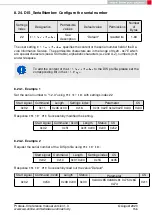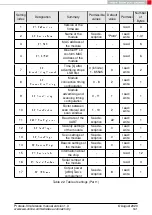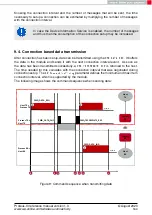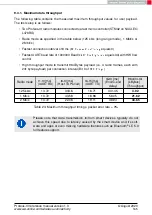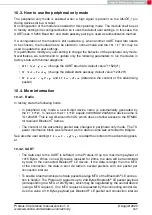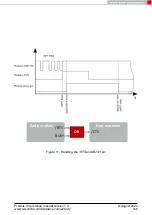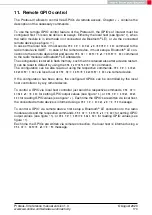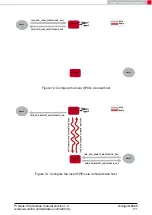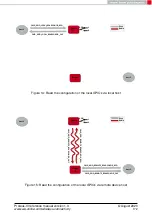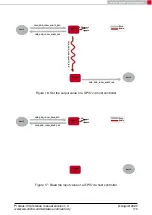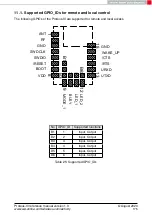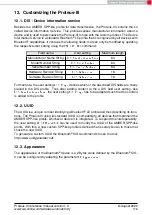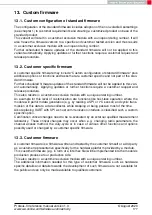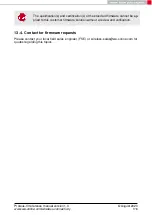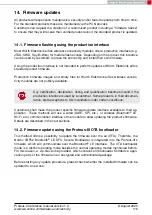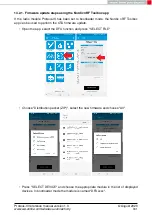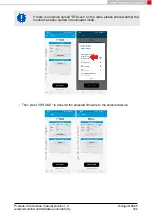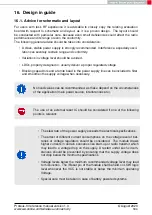
11. Remote GPIO control
The Proteus-III allows to control free GPIOs via remote access. Chapter
contains the
description of the necessary commands.
To use the remote GPIO control feature of the Proteus-III, the GPIOs of interest must be
configured first. This can be done in two ways. Either by the local host (see figure
), when
the radio module is in idle mode (not connected via Bluetooth
®
LE), or via the connected
remote device (see figure
In case of the local host, it must send a
CMD_GPIO_LOCAL_WRITECONFIG_REQ
command to the
radio module via UART . In case of the remote device, it must setup a Bluetooth
®
LE con-
nection to the remote device first and send a
CMD_GPIO_REMOTE_WRITECONFIG_REQ
command
to the radio module via Bluetooth
®
LE afterwards.
The configuration is stored in flash memory, such that it is retained also after a device restart.
It can be reset to default by using the
command.
The configuration can be also read out using the respective commands,
via local host or
CMD_GPIO_REMOTE_READCONFIG_REQ
via remote device.
If the configuration has been done, the configured GPIOs can be controlled by the local
host controller or by any remote device.
To control a GPIO via local host controller just send the respective commands,
for setting GPIO output values (see figure
), or
for reading GPIO values (see figure
). Each time the GPIOs are written via local host,
the connected remote device is informed using a
message.
To control a GPIO via remote device, first setup a Bluetooth
®
LE connection to the radio
module and send the respective commands,
for setting GPIO
output values (see figure
), or
for reading GPIO values (see
figure
Each time the GPIOs are written via remote connection, the local host is informed using a
message.
Proteus-III reference manual version 1.3
© August 2020
www.we-online.com/wireless-connectivity
170

